All About Yoga: How To Do It And What Are The Benefits?

Yoga is a Sanskrit word for Union; a union between the mind, body, and spirit. It is an ancient discipline from the Land of Ganges – spiritual as well as physical.
The meaning of Yoga is to control your breath, adopting specific postures, balancing yourself, embracing proper stretching techniques, and doing meditation. Yoga is considered to make you more fit and flexible.
Yoga is an ascetic discipline that is practised for good health, body and mind relaxation, serenity, and happiness. In more simple words, it can be said that Yoga is “what brings you to reality”.
The beauty of Yoga is that you need not be a Yogi or Yogini to get the benefits of Yoga. Yoga has the power to calm the mind and strengthen the body irrespective of your age, body type, or build.
Table of Content
How to start a Yoga practice?
Starting anything new can be a task in itself. But the longer you think about it, the longer you are missing out on the fun.
Starting the process may not be as difficult as you thought it would be. The only thing you need to remember is, ‘Take things one at a time’. Set your limits as you move forward.
The purpose of yoga is to train the body and mind, to become more aware of yourself and the world around you. But before you indulge yourself, it is important to set the right kind of atmosphere inside and out.
Don’t let the Yoga terminology, tough poses, and those fancy Yoga studios intimidate you. Yoga is for everyone and can fit well into any lifestyle. We have listed down 5 pointers for you to perfect your yoga practice:
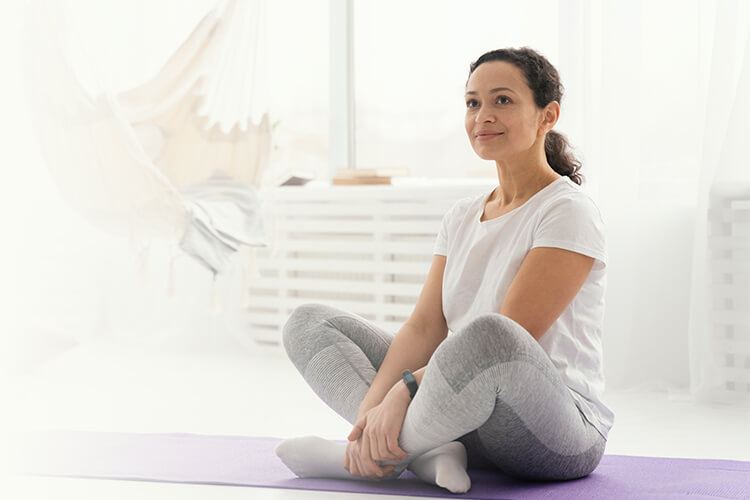
Step 1: Find Your Spot
Be it a park or a balcony, find your spot where you can breathe freely.
Step 2: Timing the Clock
Is 30-Minutes of Yoga enough? All up to you. If you are a newbie, start with 5 to 10 Minutes, gradually take it up the notch.
Step 3: Keep in Mind to Do it Empty Stomach
The best time would be soon after you wake up, after freshening up, and before having your breakfast. Also, no water or protein bars during Yoga.
Step 4: Take a Shower or Bath
Showering not only means cleaning your body but your spirit too. A cold bath will open up the pores and your body will be charged with the energy to practice Yoga.
Step 5: Wear Loose-fitting, Comfortable Clothes
By practising Yoga you are freeing your mind and body. So when that energy gets out it needs space which your tight body-hugging clothes won’t provide. Also, you can ditch your shoes; Yoga is done barefoot.
Step 6: What to Drink Before the Yoga Practice
Lukewarm water with neem, turmeric, and honey will detox your body from the inside before Yoga.
Step 7: Get Into That Zone
Notice your breathing. Get comfortable with the stillness. Try to hear your heartbeats and any noise around you.
These were the most basic preparations you can do before Yoga, at home or any place of your choice. We will soon come to the types and poses for Yoga. But, for the time being, let us understand why one should practice Yoga and how it will bring benefits to your life.
Benefits Of Yoga: What is Yoga Good for?
Yoga is the go-to exercise for a gym freak or someone who entered the world of fitness.
Regardless of the level, you are on ‘Yoga Expertise’ if you practise yoga daily with some sincerity, you can feel better from head to toe!
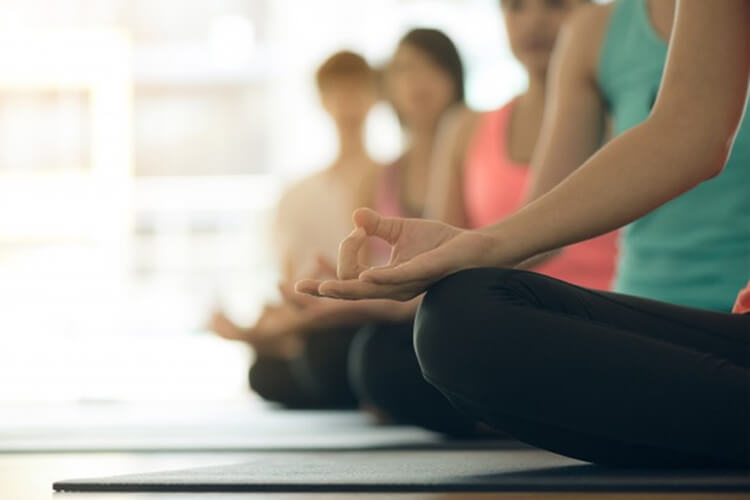
Yoga won’t magically cure you of your illness. But, daily yoga practice can offer you physical and mental health benefits. From 2 years old to 92 years old, anyone can do Yoga.
If you are going through any ailment or recovering from surgery, Yoga can become an important part to improve your health and speed up your healing process.
The best thing about Yoga is that you don’t need to carry tons of items with you to practice it. Just roll out a mat and place yourself on it. But if you need more points to roll it out, find in detail benefits of Yoga below:
Improves Strength, Balance, and Flexibility
Adding Yoga to our routine is a great way to improve strength, balance, and flexibility. Most of us have 9 to 5 jobs where we spend sitting. This leads to pain and immobility. Practising Yoga first thing in the morning will help us to reverse this process.
Manage Stress and Anxiety Levels
Less stressing and more relaxing is the go-to motive of Yoga. By reducing the stress level Yoga is also helping us to improve the quality of life and mental health. The focus that Yoga demands force the worries of the past and tension of the future to leave our body and live in the present.
Yoga involves breathing exercises that help you relax almost instantly, relieving stress and anxiety.
Reduce Back Pain
So many people spend their time sitting in front of a computer or driving a car which results in tightness throughout the body and having back pain. Practising yoga for a few weeks or months is good as the basic stretching may ease chronic low back pain, help you function better, improve mobility, and enrich your quality of life. Yoga reduces spinal compression and helps overall body alignment to reduce back pain.
Benefits Heart Health
Regular yoga practice may reduce inflammation, levels of stress, keeps off weight, and improves cardiovascular health, contributing to healthier hearts.
Increases Self Confidence
Yoga aims to connect the mind, body, and spirit, making you more aware of your body. After practising Yoga you may feel increased mental and physical energy, a boost in alertness and enthusiasm, and fewer negative feelings. You learn to accept your body without any judgment. With time, Yoga leads you to feel more comfortable in your own body, thereby boosting your self-confidence.
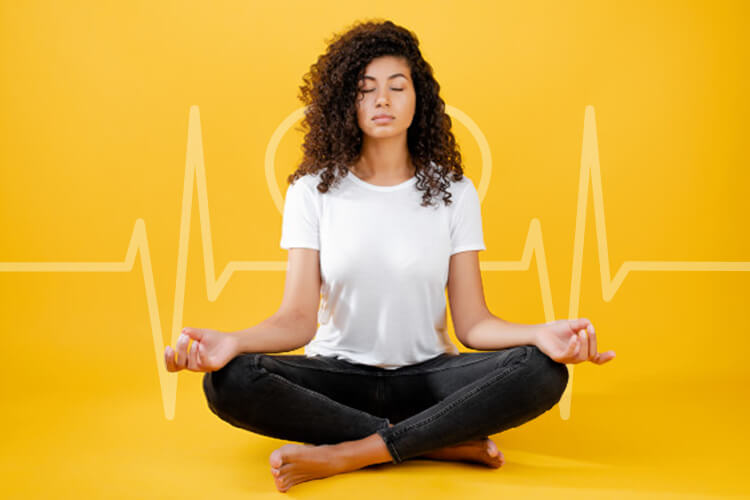
Improves the Quality of Life and Promotes Better Self-Care
Yoga makes all your nerves calm down. All the relaxing and restorative Yoga poses can benefit you if you need to chill out and de-stress. It improves your mood, reduces fatigue, and is perfect for your rest-day self-care.
Helps You Sleep Better
You may do Yoga before your bedtime also and this consistent routine can help you get in the right mindset. You may fall asleep faster, stay asleep for the right duration, and you will feel more rested in the morning.
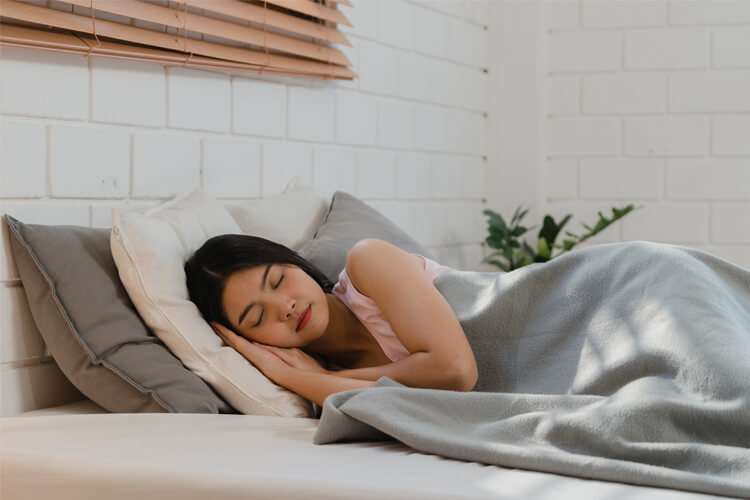
It is also said that saying “OM” while practising Yoga can benefit you. Now that you know the benefits you can get your mats out and know some Yoga Poses for Beginners:
Yoga Poses You Need to Know
The only Yoga pose that you must have seen in TV ads is Tree Pose. But there are approximately 80+ Yoga poses that exist as of now. Not bluffing. Don’t worry we have not mentioned them all.
Down below are some of the basic Yoga poses you should know about as you enter the relaxing world.
Every Yoga pose has its benefits, for instance, cat or cow pose benefits you if you have back pain, if you want to have a goodnight’s sleep then you have the legs-up-the-wall pose.
Not to overwhelm you now, let us take baby steps and start with similarly named poses.
Child’s Pose
This is like the reset pose, before moving on to your next pose. Do it when you want a gentle stretch through your neck, spine, and hips. Focus on relaxing the muscles of your spine and lower back as you breathe in and out.
Downward-Facing Dog
This is the best pose if you want to relieve back pain. Make sure you put equal weight on both hands, while you are lifting your hips and back, and keep it away from your shoulder. This pose also keeps your heart healthy.

Plank Pose
If you want those pancake abs, start doing this pose. It tones your abs and builds strength in your upper body. Tip: Keep your hands and back straight. You don’t want to get injured while doing this common plank pose.
Four-Limbed Staff Pose
You might know how to do a push-up, right? Well, it’s just that but the twist is that you have to hold that push-up position. Point to keep in mind; press your palms at shoulder length apart evenly on the floor, lift yourself a little and hold this pose.
Cobra Pose
The name means what it says. This back-bending pose helps you strengthen your back muscles, stretches your chest, shoulders, and abdomen, and increases flexibility.
Tree Pose
Not only this famous pose improves your balance and posture, but it also helps you strengthen the core, spine, thighs, calves, and ankles. It also works on your flexibility and overall strength. Keep breathing in and out while doing this pose.
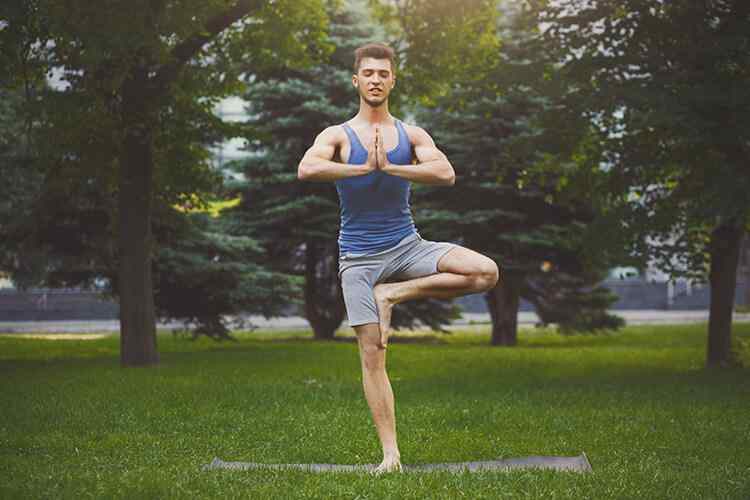
Triangle Pose
This shaped pose helps in increasing the mobility in the neck and hips. Helps in building strength and endurance. Just keep your raised arm lifted towards the ceiling. By doing this you will be able to keep your balance and keep the pose buoyant.
Seated Half-Spinal Twist Pose
This pose helps you to release the tension, stress, and tight muscles around your shoulders and back. Keep in mind to lift your torso when you breathe in and twist as you breathe out. This twisting pose can increase the flexibility in your back while stretching your chest, shoulder, and hips.
Bridge Pose
If your day mostly consists of sitting, doing this pose will open your upper chest. This back-bending pose stretches all the main muscles like the chest, back, and neck. Builds the strength of your hamstring muscle.
Corpse Pose
The end pose manages your stress and relaxes you in all ways. When you are lying down flat on the mat, feel the weight of your body part one by one sink into the mat. You can skip it if you don’t want to have a moment’s peace. But if you want to do it in between any pose, you can always do that.
Types of Yoga: Which is Your Perfect Match?
There may not be the right or wrong pos, just not right for you right now. Are you getting it? If you choose the Type of Yoga that looks interesting and exciting to you, you would do it, even if in a modified version.
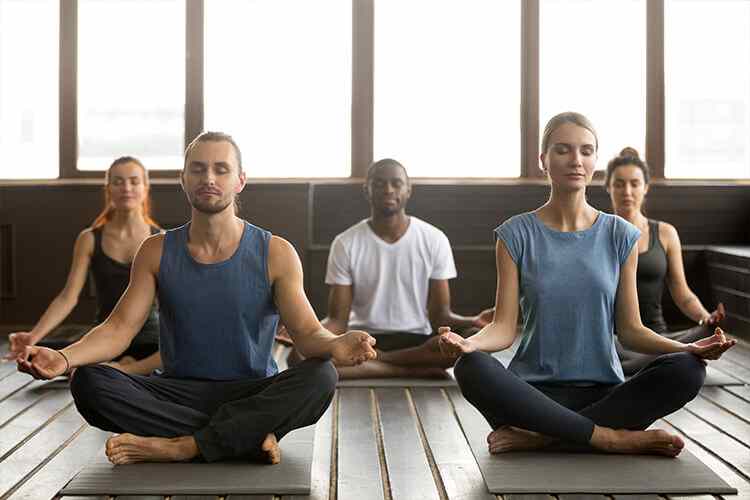
Here are different Types of Yoga for beginners. They are quite common and of a variety, so you can decide which type is perfect for you. The type where you use the tools like Restorative Yoga or something as simple as Hatha Yoga.
Hatha Yoga
The Sanskrit word for Sun and Moon leads to Hatha Yoga. It is designed to balance the opposing forces. The balance might come from breath and body, strength and flexibility, or physical and mental energy. This Yoga type is ideal for you if you are looking for a balanced practice or those in search of a gentler type of yoga.
Sivananda Yoga
Sivananda Yoga is a form of Hatha Yoga designed to support your overall health and wellbeing. It was based on the teachings of Swami Sivananda. Sivananda Yoga starts with the corpse pose, followed by breathing exercises, sun salutations, and then 12 basic asanas.
Ashtanga Yoga
Ashtanga Yoga is a series of six specific poses that are taught in order. Once you master the first pose then only you are given the next pose by your instructor/teacher/mentor. Every person moves at their own pace. Interesting Fact: No music is played during Ashtanga Yoga.
Kundalini Yoga
Kundalini Yoga is practised to unlock the energy within you, reduce stress and negative thinking. This is achieved by challenging your body and mind together with chanting, meditation, and kriyas (a specific pose). Anyone searching for a physical and spiritual practice that involves chanting and singing.
Vinyasa Yoga
Vinyasa Yoga is also known as ‘Flow Yoga’ or ‘Vinyasa Flow’. It is a style of Yoga where the pose is synchronized with your breath in a continuous rhythmic flow. Flow Yoga can be practised by beginners and even those who are into Yoga for years. You will love this Yoga type if you are more of a movement kind of person, as this practice barely has stillness.
Power Yoga
Good workout? Check. Less Spiritual Yoga? Check. Power Yoga is a mixture of Hot Yoga and Flow Yoga. It works on your muscles by strengthening them and also works on your flexibility. The variation it has keeps your mind busy while you work on all the muscle groups in your body.
Yin Yoga
Yin Yoga is designed to increase the circulation in the joints and to improve flexibility. Yin Yoga targets the connective tissues of your body than major muscle groups. You have to hold a single pose for a minute and can stretch it up to five minutes also. Suggested for those of you who need to stretch after a long workout.
Iyengar Yoga
For those of you who are in search of a more classical form of Yoga, Iyengar Yoga is for you. It is named after its founder, B.K.S Iyengar. He developed this classical, alignment-based practice in India. It is also perfect for someone with physical limitations.
Bikram Yoga
You like to break a sweat, want more physical practice, or as a routine; take up Bikram Yoga classes also known as ‘Hot Yoga’. Bikram Choudhury developed this Yoga with a set of strict rules. Bikram yoga has 26 postures with 2 breathing exercises, and a room with 105° Fahrenheit temperature in addition to 40% humidity.
Prenatal Yoga
Moms-to-be and new moms this Yoga is for you. Prenatal Yoga focuses on easing the pain that is associated with pregnancy, like sore hips or an aching low back. It also provides you exercise, stress relief, and self-care in one session, and the breathing exercises can come in handy during labor and delivery.
Aerial Yoga
Kind of new in the market, but catching up fairly. Also known as Anti-gravity Yoga, this involves traditional yoga poses but you get added support of a strong, silky hammock that hangs from the ceiling. Aerial Yoga can either be physically challenging or relaxing for you. Enjoy your time being upside down.
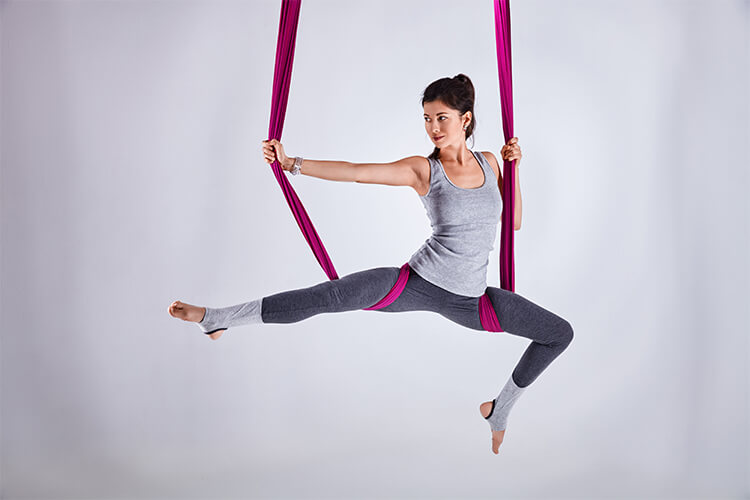
Acro Yoga
Acro Yoga makes you leave your mat and connect with your classmates. It helps you explore your mind and body while developing communication with your partner and setting boundaries. Recommended for couples who want to build trust and intimacy.
Restorative Yoga
Here comes the fun part, Restorative Yoga uses props to support your body. The aim is to relax the body into the poses, held for a minimum of 5 minutes. This Yoga focuses on down-regulating the nervous system of your body. It is meant for someone who struggles to relax their body and mind. The best part? You won’t be thrown out of the class if you fall asleep.
Is Yoga Therapy Different Than a Yoga Class?
Yoga therapy is a modern term that uses yoga postures, breathing exercises, meditation, and your imagination power to improve your physical and mental. The holistic focus of yoga therapy covers a broad range of therapeutic modalities, that includes the elements from physical therapy as well as psychotherapy.
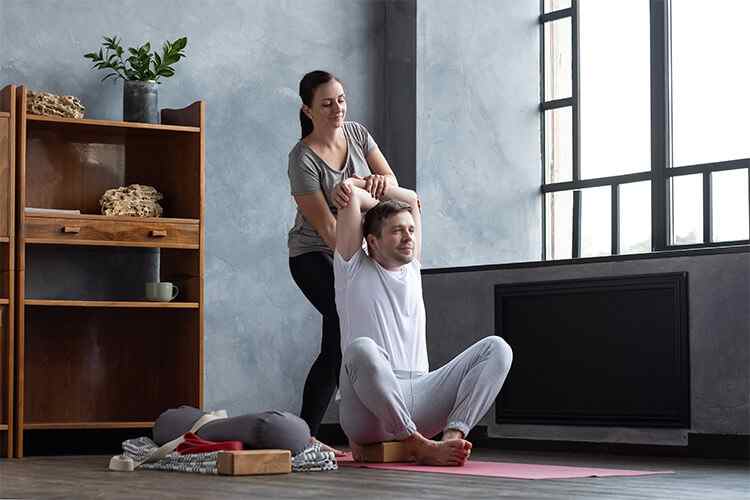
Talking about the benefits of Yoga therapy; it is a growing field that is used to treat existing physical and mental issues. It can also be used as a self-care tool for prevention and maintenance. Yoga therapy is used for treating anxiety and depression. In today’s world, Yoga therapy is also emerging as an effective treatment for substance abuse issues.
Yoga therapy addresses issues like back pain, asthma, arthritis, heart conditions, chronic fatigue, hypertension, balance issues, oncology, side effects of chemotherapy, and other specialities. Some therapists use Yoga therapy in their delivery of massage and other treatments. Yoga therapy practice can resemble physical therapy, rehabilitative therapy, and/or psychotherapy. In addition to this, Yoga therapy also helps in reducing stress, improves psychological well-being, improves your diet, and helps in the functioning of your system.
As compared to a Yoga class, a Yoga therapy session is conducted one-on-one or in a minimal group setting. It is said that Yoga therapy can directly be used to treat a specific issue or complement other forms of treatment. The techniques used in Yoga therapy ranges from basic to advanced and can be enjoyed by people of all ages.
Few Tips and Tricks for Yoga Newbies
“Yoga is for everyone”
The only tip you need. But of course, we’ll give you some insights too.
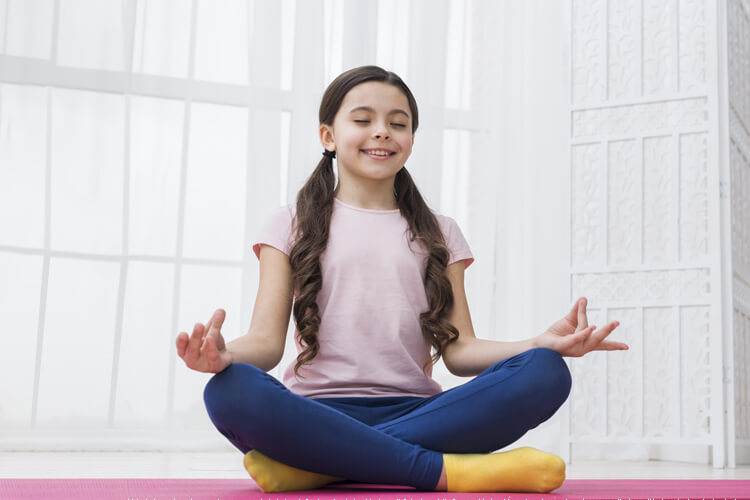
Let us start by taking a few deep breaths. Close your eyes and shut your mind off. Easier said than done, no kidding!
These tips will put your mind at ease.
Find A Good Yoga Teacher
When you are trying something new, it can be hard to decide where to start. Join a Yoga class where there is a Yoga expert. Either way, in today’s time, you can find multiple Youtube channels and apps on your phone which will guide you step by step, and that too free of cost.
Respect Your Body’s Inner Wisdom And Limitations
Don’t push yourself to get out of your comfort zone on Day 1 only. It is perfectly fine to start at a snail’s pace and gradually reach the top. No one is going to judge you. Yoga is meant for you to know your body, listen to it and you’ll know the way.
Breath
The first step to practising Yoga is to control your breathing. It is about finding that rhythm, a healthier and deeper harmony between our mind, body, and soul. Breathing is central to all of this. You will learn a lot about healthy breathing in Yoga.
Don’t Compare Yourself With Others
Your competition is with the person you were yesterday. There will be people around you who are more experienced, more knowledgeable than you. That does not mean you have to compete with them. Focus on yourself and appreciate the progress you are making, no matter how small.
Have A Sense Of Humor
Yoga is a quiet and disciplined activity. But it is not compulsory to be serious all the time. Trying new poses can make a few of our muscles go stiff. Cracking jokes time and again, being gentle with yourself can keep you away from any sort of injury.
Make Practice Frequent
‘Practice makes a man perfect’. Daily Yoga for 10-15 minutes will prove to be more effective than 60 minutes of practice every alternate day. Your body will get comfortable with the practice and reap more benefits, gradually becoming flexible.
Modify Postures For Your Body
Even though you are a gymnastics person who is a pro at doing handstands, if you come after a gap of 3 months, your body will need time to get back into that zone. Similarly, as a beginner, if you are doing Yoga for the first time you can modify the poses shown by your teacher.
Relax! End Your Yoga Practice With Savasana
Always end your Yoga practice with the Corpse Pose. Don’t be in a hurry to just be done with it. Slowly roll to your side, come in a sitting position and then get up.
Myths
You might have heard numerous myths about Yoga. Some are even contradicting and conflicting, and it’s time to set these myths straight. If you had any of the following misconceptions about Yoga, read on to bust them right away.
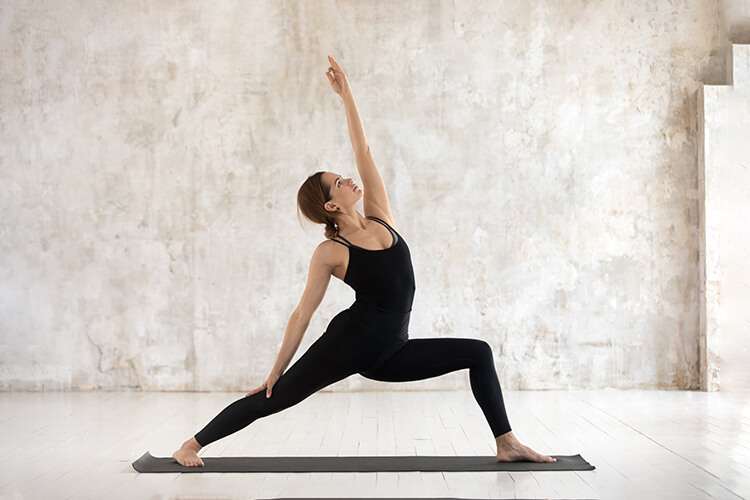
You Have to Be Flexible to Do Yoga
It’s like saying you have to be the Winner of Indian Idol to join the Singing class or be an NBA player to learn basketball. practising Yoga will help you to become flexible – that is why it is called practice. To cut it short, ‘Flexibility is the result of daily Yoga, not a prerequisite’.
Yoga Is for the Thin, Young, and Beautiful
Yoga is not exclusive to the Thin, Young, and Beautiful Models. Pictures can be deceptive. The photos you see of girls twisting and bending like a Pretzel are made for social media only. No doubt they make them look attractive and maybe inspire people to start practising Yoga, but it’s actually quite misleading.
Yoga Is a Religion
Yoga has a spiritual element in its practice which helps you to connect with the energy inside you but Yoga itself is NOT a religion.
Yoga Is Only About Stretching
As mentioned in the beginning Yoga is about your breath and the union between your mind, body, and spirit. Yoga is more of a practice than a workout. What you do on your mat is not important but what you take from that 5 minutes or 60 minutes practice. The goal is to live in the present.
Yoga Is Too Easy or Too Hard
If you are scared to leave your comfort zone then you are likely to face either of the challenges. Yoga isn’t too easy or too hard, it can play between the walls. To be honest, it depends on you. There are some easy poses like Child’s Pose or Corpse Pose, then there are some hard ones too.
You Shouldn’t Do Yoga During Pregnancy
As long as you are practising safely, without any stunts it’s all good. But still, it is advised to work with a qualified Yoga instructor or go to a specific moms-to-be Yoga class.
You Need Expensive Tools and Apparel to Do Yoga
If you plan on buying those Yoga Pants from Fendi and Joah Brown you are likely to get your bank account empty. But in real terms, you don’t need anything while practising Yoga. You can even do Yoga without a Yoga mat and just practice it on the carpet your living has.
Doing Yoga Poses Is Embarrassing
To break your stress bubble, just know that everyone who’s practising Yoga with you in the class is too busy dealing with the poses and are in their zone that they hardly notice what people around them are doing. It’s okay to feel conscious but once you get engrossed with your breath and posture, you won’t care about the outside world.
Real Men Don’t Do Yoga
It is bizarre because nowhere it is written “No Men Allowed” or “Only Females Only”. Do your research and you’ll know some of the well-known Yoga practitioners are Male species.
Yoga Takes Too Much Time
If you have 15 minutes to play Call of Duty or make a Tiktok, you can surely take out a few minutes from that free time and do Yoga. Too much time is just an excuse to run away. You only need to know that you are doing this for yourself and your peace, not for anyone else!
FAQs
1. What Yoga Style Should I Practice?
There are many types and poses. Deciding which one to opt for depends on your interest, age, fitness goal, current level or type of other activity/exercise, temperature preference, etc. Some styles are slow while some are fast, easy, or level 10 hard. To find your perfect match, try experimenting with different styles of classes. You can keep hunting till you find the one.
You can start with Hatha yoga as it is the basic style. Soon you’ll learn how to move and function with your breath, which will prepare you for other styles including Vinyasa flow and Ashtanga.
2. Can I Eat Before Yoga Practice?
The best time to do Yoga would be on an empty stomach. Either way, it is suggested to wait an hour after eating before practising yoga. You have to observe your body, learn how much time you need to digest your food before practice.
3. Do I Have to Be Flexible to Practice Yoga?
Two letters – NO. Instead, if you are not flexible, yoga is a great path to get more flexible.
4. Can Yoga Help Me Lose Weight?
Absolutely. The gentle Yoga poses along with mindful breathing helps you to detoxify the body, cleanse the digestive tract, and decrease anxiety. You can blame stress as it is one of the biggest culprits behind weight gain. Yoga can help you reduce your stress and provide a form of exercise that can strengthen the body as well as tone your muscles.
5. How Many Times A Week Do I Have To Practice?
The best would be to practice daily Yoga, even if it’s just for 5 minutes in the morning when you crawl out of bed. You can practice Yoga anywhere, so squeezing in 5 minutes is not a big deal, right?
6. Can I Do Yoga When I Am Menstruating?
It varies from person to person, so listen to what your body says. Some women prefer to pause their yoga practice during the red days while others do it to stop menstrual cramps. Yoga helps you relax, and takes you off the edge, even preventing your mood swings. It is advised to avoid any postures that have inversions. Practice breathing and grounding pose.
7. What If I Can’t Do a Pose?
Take baby steps, you have to crawl before you start walking, and walk before you run. Yoga can be molded just like you do while doing poses. You can search up for a modified version of the pose or ask your instructor for that. Yoga is for honouring your body and doing what is best for you. You should not force yourself into a square shape if you are a heart shape. (into a shape that you aren’t ready for.)
8. What Are Some Common Mistakes That Those of Us practising at Home Might Be Making?
The first is pushing yourself to fit into the box or pose that you are not ready for. Same way – not giving Yoga enough time, you have to be patient. Getting bored is not the way to go. Next would be if you are aiming to expert a pose or form. Yoga is about the journey and experience you have as a whole. Lastly, not taking enough time to rest between poses or asanas and exhausting yourself.
9. How Can Yoga Help in Overall Development?
Yoga is about self-indulgence rather than self-development. Yoga is a process that allows you to have peace of mind from the chaos around you. Yoga is when your experience of life shifts from being in an enclosed entity to universality. When you reach there, you will have a sense of freedom to play with, then you can reroute your life whichever way you want, and at the same time life cannot leave a scratch upon you.







